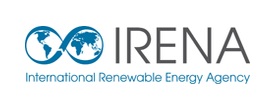British Columbia now has enough detailed information about the height, frequency and direction of its coastal waves to start developing and testing wave energy converters in the ocean, according to a new report released at an energy conference at the University of Victoria today (4/27).
Produced by the UVic-led Pacific Institute for Climate Solutions and co-authored by researchers at UVic's West Coast Wave Initiative (WCWI), Wave Energy: A Primer for British Columbia summarises key research findings about the magnitude of BC's wave energy potential, explains how wave energy converters work, and examines the opportunities and challenges of the sector.
Speaking at the EnVision 2017 conference, the report's lead-author and WCWI programme manager, Bryson Robertson, says it's common knowledge that BC has one of the most energetic wave environments in the world. But, he says, designing a mechanical device to extract usable electricity from wave motion requires specific and detailed information about wave characteristics and now they have it.
"Waves arriving on BC shores are the result of storms occurring across the vast Pacific Ocean, making waves a highly predictable resource for power system managers compared to other variable renewable energy sources," he notes. "WCWI has found on average a four-hour wave forecast is reliable within a 15 percent margin of error, while wind and solar in the Pacific Northwest are closer to 77 percent and 86 percent respectively."
Robertson says this impressive forecastability means the requirements for a grid back-up power source would be significantly less, allowing for a more efficient electrical system, and overall lower costs to integrate the same quantities of renewable energy.
The team, led by WCWI director Brad Buckham, developed a computer model of the BC coastline from the Columbia River in the south, to Haida Gwaii in the north. This was combined with years of data from wave measurement buoys, which revealed several "sweet spot" locations for wave energy development. Another advantage they uncovered is seasonal timing, whereby the biggest (and most energetic) waves occur in winter, coinciding with times when local energy demand is highest.
Robertson says now that the WCWI team has built a database of BC wave conditions that's globally unique in its extent and comprehensiveness, it's time to take things to the next level.
"We've seen major advances in solar and wind energy and BC now has the opportunity to play a leadership role in wave energy development," he says. "I see the initial beneficiaries being remote and/or First Nations communities currently dependent on diesel. Longer term, once greater energy efficiencies are gained, wave energy could be part of a suite of renewable energy sources for BC, as well as provide export potential for cleantech companies."
The wave energy primer covers other next-step industry challenges, including the high per-unit cost of energy compared to other renewables, biofouling, gaining social license, and operating in a hostile ocean environment.
Sybil Seitzinger, PICS executive director, says the demand for electricity will ramp up as the world shifts to electrify transport and other sectors, so investigating the full range of non-emitting energy sources is paramount.
Media contacts
Bryson Robertson (Institute for Integrated Energy Systems at UVic) at 250-891-8117 or bryson@uvic.ca
Leigh Phillips (PICS communications) at 250-853-3677 or dlp@uvic.ca
Robyn Meyer (PICS communications) at 250-588-4053 or rmeyer@uvic.ca









